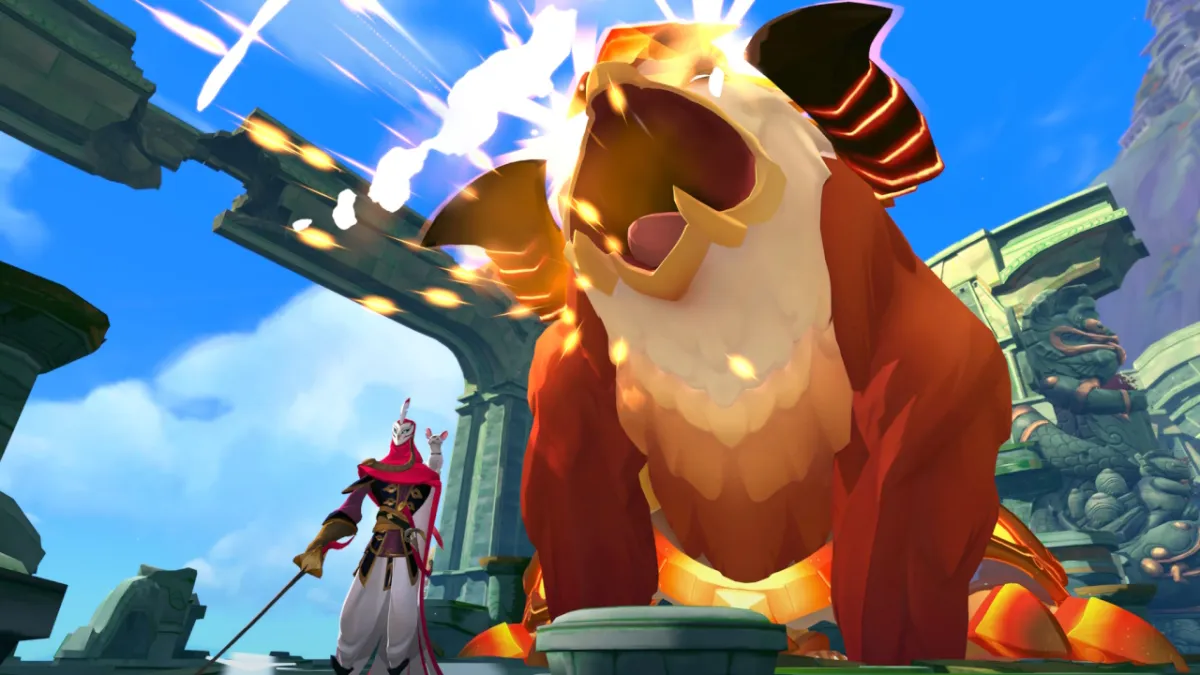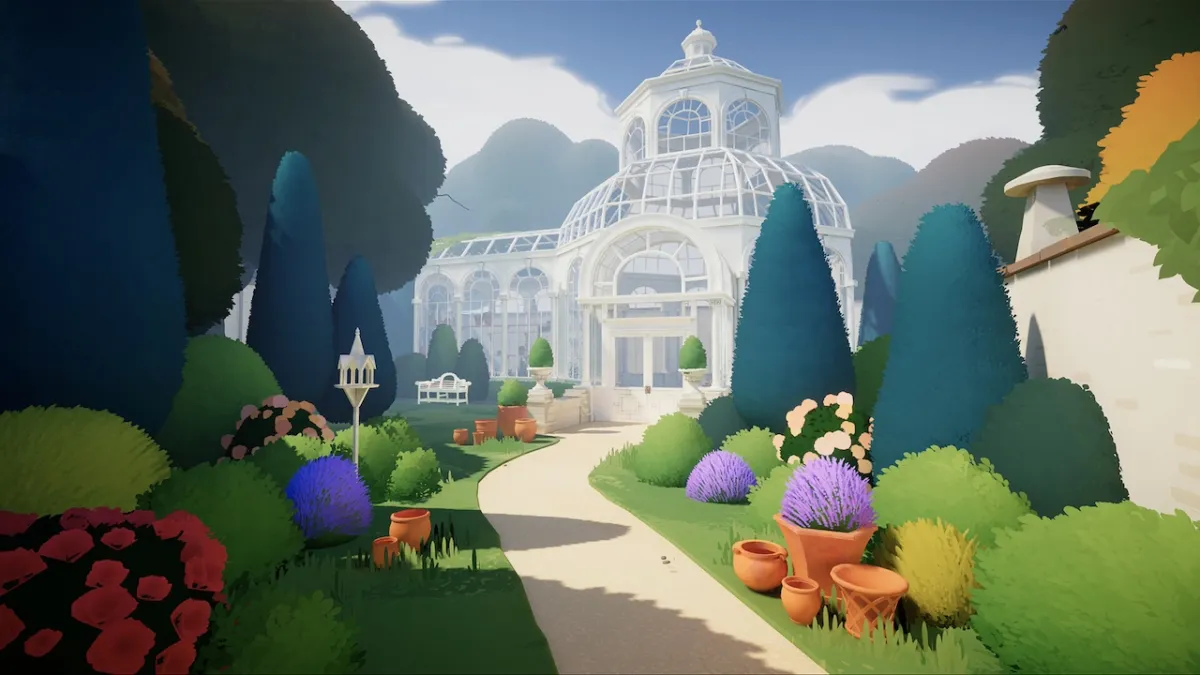We’d better get one thing out in the open before going any further with this review: I liked Diablo 3. I liked the streamlining, the slickness, the polish, the skill synergies; I liked the way it felt and the way it played. You could (probably justifiably) say that it didn’t have much in the way of an endless endgame, but that wasn’t something I was really looking for when I went into it. So, y’know, that’s me. I liked it.
If you didn’t like Diablo 3, then I’d hazard a guess that Torchlight 2 will probably be more up your alley, particularly if your alley happens to go from Diablo 2 Boulevard to Torchlight Avenue.
Make no mistake, Torchlight 2 is a game in which you click on monsters and then click on loot. You click to move down a corridor, then you click to kill a monster, then you click to open a chest, then you click to scoop up the resultant geyser of treasure, which is usually so bountiful it’s often reminiscent of what would happen if King Midas suffered bulimia. Seriously. Look down.
In short, if you’ve played just about any other ARPG then you’ve got a pretty good idea of how the game’s basics work.
This time around we’ve got four classes to choose from – the gun-toting Outlander, the melee-focused Berserker, the glass-cannon Embermage, and the tank-like Engineer – but, honestly, trying to pigeonhole any of them is surprisingly difficult. I described the Engineer as tank-like, which is true as they have a number of skills devoted to using a sword and shield combination. They also have plenty of skills focused on two-handed weapons, or can instead equip a cannon and use a plethora of robotic devices to support them. Classes are heavily customisable through the variety of skills they have available, and it’s entirely likely that your Embermage will look and fight nothing like mine, who – by level 50 – resembled a polychromatic pinwheel of death.
That said, once you’ve started customising your class, you’re kinda locked into it. Diablo 3 had you unlock skills gradually, automatically upgraded your stats with each level, and let you swap your active abilities in and out on the fly. Torchlight 2 has you assigning stat points and skill points manually, and the only nod it gives to respeccing is an option that lets you remove the last few skill points you picked. If you decide your build isn’t working for you, then you’re either going to have to start from scratch or simply stick with it and start assigning your skills in different ways. Anyone who used to restart Diablo 2 regularly when attempting to try and create the perfect build will doubtless be pleased, but anyone scared off by this shouldn’t be too worried: breaking your character seems remarkably difficult to do.
Levelling doesn’t take long, anyway. Torchlight 2 has nailed the pacing: you’ll gain levels fast enough that you never feel as though you’re grinding, but they’re far enough apart that they’re always meaningful. There are also usually a few levels between the “big” upgrades; you’ll spend four or five levels putting points into abilities you already have, slowly becoming more powerful, and then you’ll suddenly gain access to another three skills that may completely change the way you play.
The fast pace also means that you’re constantly grabbing new equipment. Almost everything you kill will drop something, whether it’s a piece of vendor trash (which you can get your pet to sell, meaning you don’t have to keep taking pace-breaking trips back to town), something with randomised stats, or even a set piece or a unique item. Yep: even the latter two drop with fair regularity. Happily, although items have a level limit, you can skip this if the relevant stats are high enough, so with some careful stat management you can equip a level 20 wand at level 10.
This leads me onto one of the few things I actually dislike about Torchlight 2, and that’s the lack of direct item comparison. Mousing over an item displays both its stats and the stats of whatever you have equipped, yes, but it doesn’t calculate the difference between what you have and what you’re looking at; there’s no “+12 damage, -4 Strength”, which means that working out whether an item is better or worse can be an arduous task – particularly if you’re looking at unique items, which tend to have a lot of stats attached. It only gets worse if you’ve started throwing extra enchantments onto them. A fairly minor niggle, but one that got more grating as the game went on and my weapons’ stats began to resemble character sheets from old RPGs.
Primarily, Torchlight 2 offers two major changes over its predecessor, and the first is the addition of full multiplayer. You can still play single-player, of course (and it’s totally offline) but you can also delve into the game with friends and strangers, via LAN or internet.
As you’d expect, it’s an excellent addition. Classes go together as well as cake and yet more cake, and the game’s difficulty ramps up depending on how many players are in each area. Playing with friends is a particular joy if you’re unused to the other classes, too, with constant cries of “What the hell is that?” as one of you uses a new ability for the first time. The nature of the game means that it can be a bit of a pain to play with friends – it’s probably best to only use particular characters for each group of friends, as any extra play will lead to you quickly outlevelling the others – but you can still just set your game up online and play with anyone else who might drop in.
The other big change is that of the open world. You’re no longer relegated to the town of Torchlight and the sprawling depths beneath it; instead, you trawl the land, grabbing sidequests and delving into any other dungeons and caves you might come across like a bloodthirsty cross-country spelunker. In gameplay terms you’re still doing much the same things, but it certainly changes the feel of the game: by the end you’ll have gone through a variety of environments, from tundra to desert, and the whole thing feels like more of an adventure because of it.
“By the end” perhaps isn’t all that accurate, though, as that implies an actual end. On finishing you can either loop your character back around to the start with New Game Plus, or use your hard-earned gold to purchase maps to specialised dungeons with individual quirks and remixed bosses. In short, the end isn’t the end. You’ll probably be around level 50 by the time you finish your first runthrough, and as the cap is – by default – at 100, there’s still plenty to do. I say “by default” because Torchlight 2 features full mod support, so I fully expect that to have changed within a week, and mods themselves should add plenty more to do on the way to level six billion, or whatever modders change this to.
For all that Torchlight 2 gets right, though, I do have a few complaints. A few, like the above item comparison, are fairly minor; the view is perhaps a bit too zoomed in, making enemies lower on the screen a little harder to see and hit, and it’d be nice to have an option to move in the direction of the cursor instead of to the cursor’s position, particularly around stairs. I’d also quite like a separate map screen showing the entire area as some of the zones are too big to fit into the overlay map, and considering the ridiculous size of Act 3 and the sheer amount of hidden goodies around there, there were a few times I really wanted to slap down a couple of waypoints, too.
The one issue that’s less minor is that of the game’s difficulty, but that’s a bit harder to gauge. I’ll state right out that if you’ve got any experience with this genre you should probably be playing on Veteran or Elite difficulty out of the gate, because Normal is a walk in the park. Thanks to the aforementioned selectable maps at the endgame I could test this out a bit, so I sent my level 50 Embermage into a couple of level 70 dungeons, and… cleared them without incident. Starting a new Embermage on Elite provided rather more of a challenge, in that I actually had to pull back, kite, and play carefully. Every new pack of enemies was a challenge.
When playing on Veteran difficulty in co-op with Paul, however, the difficulty was far higher than expected. Death was far more commonplace, and I died more than even on solo Elite. As I said, though, this is hard to gauge: am I much better with an Embermage than the Engineer I was playing in co-op? Is Paul so rubbish he dragged me down? Or is the difficulty balancing ever-so-slightly off? Without spending a lot more time checking all of these things out, it’s really rather hard to say. On the plus side, this was far more fun than the cakewalk that was Normal difficulty. Challenge, when fair, is always a good thing – and death here never felt random.
I could probably spend a dozen more paragraphs exploring why Torchlight 2 works so well, but in the interests of saving time: it just works, dammit. The pace is generally spot-on in terms of gaining power, how long monsters take to kill, and how long exploring a new dungeon takes. Individual monsters require their own little tactics to deal with, and enough is randomised that the overworld areas feel fresh, while still being tightly-packed with enough secrets that they don’t just feel bland, endless, and open.
Torchlight 2 is to Torchlight what Diablo 2 is to Diablo. There’s a much greater emphasis on multiplayer, more variety and ingenuity across classes, and the single town with a dungeon beneath it has given way to a much larger overworld that’s fun to explore. If you hated Diablo 3, this might just be what you were waiting for – but this is a good enough ARPG that there’s something here for you even if you were a huge fan. Considering the £15 entry fee, there’s really very little reason not to give Torchlight 2 a punt.
Also: Torchlight 2 let me have a cat as a pet, which I immediately named Dog. I turned it into a crab every 15 minutes, and gave it the ability to summon skellingtons. What more could you want?









